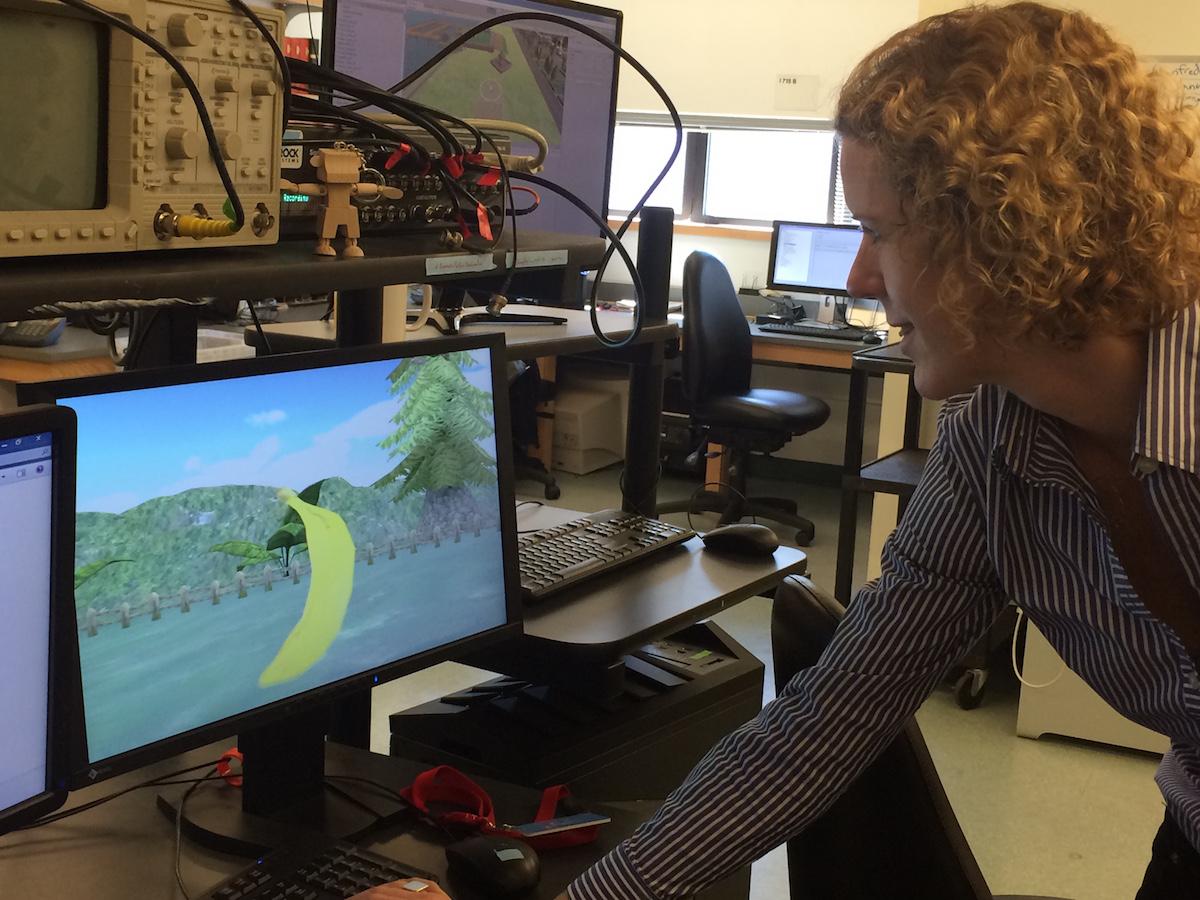
Researchers are studying memory formation in the primate brain—and finding clues for interventions for Alzheimer disease along the way.
Giuseppe sits in a small room playing a videogame, joystick in hand. He zooms through a grassy field, foraging for big yellow bananas. Banking left, he speeds along a stonewall and captures two. A sweet treat rolls down a tube into his mouth, and he munches on his reward. Giuseppe, a monkey, is a research participant in the Buffalo Lab at the University of Washington.
In the lab next door, researchers watch a thin yellow line zigzag across a computer screen, with a loud crackling sound. “That’s the sound of a neuron firing an action potential,” says graduate student Seth Koenig, who is recording the activity of single neurons in the monkey’s brain, via a hair-thin electrode implanted into the medial temporal lobe. A camera setup tracks his darting eye movements.
Along with four other monkeys trained to play various computer games, Giuseppe is helping researchers to figure out how the primate brain forms memories—and clues to interventions for the memory impairments of Alzheimer disease along the way.
Read full article from the UW Medicine Memory & Brain Wellness Center…